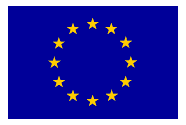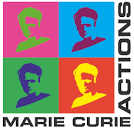- NoCoSMiC: Non-Coding Somatic Mutations in Cancer) –European Commission MARIE CURIE ACTIONS Intra-European Fellowships (IEF).


BACKGROUND: The identification of mutations that play a causal role in tumour development, so called “driver” mutations, is of critical importance for understanding how cancers form and how they might be treated. Several large cancer sequencing projects have identified genes that are recurrently mutated in cancer patients, suggesting a role in tumourigenesis. While the landscape of coding drivers has been extensively studied and many of the most prominent driver genes are well characterised, comparatively less is known about the role of mutations in the non-coding regions of the genome in cancer development. The continuing fall in genome sequencing costs has resulted in a concomitant increase in the number of cancer whole genome sequences being produced, facilitating systematic interrogation of both the coding and non-coding regions of cancer genomes.
RESULTS:
To examine the mutational landscapes of tumour genomes we have developed a novel method to identify mutational hotspots in tumour genomes using both mutational data and information on evolutionary conservation. We have applied our methodology to over 1300 whole cancer genomes and show that it identifies prominent coding and non-coding regions that are known or highly suspected to play a role in cancer. Importantly, we applied our method to the entire genome, rather than relying on predefined annotations (e.g. promoter regions) and we highlight recurrently mutated regions that may have resulted from increased exposure to mutational processes rather than selection, some of which have been
identified previously as targets of selection. Finally, we implicate several pan-cancer and cancer-specific candidate non-coding regions, which could be involved in tumourigenesis.
CONCLUSIONS:
We have developed a framework to identify mutational hotspots in cancer genomes, which is applicable to the entire genome. This framework identifies known and novel coding and non-coding mutional hotspots and can be used to differentiate candidate driver regions from likely passenger regions susceptible to somatic mutation.